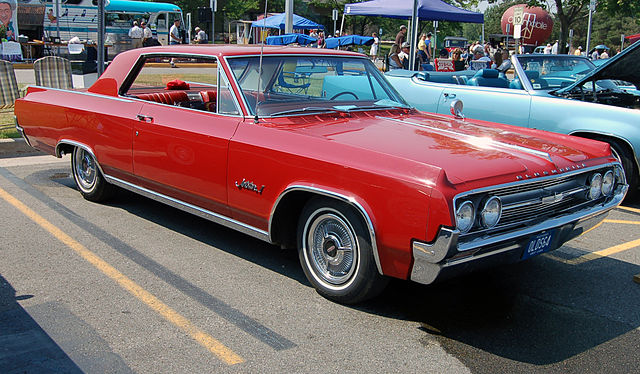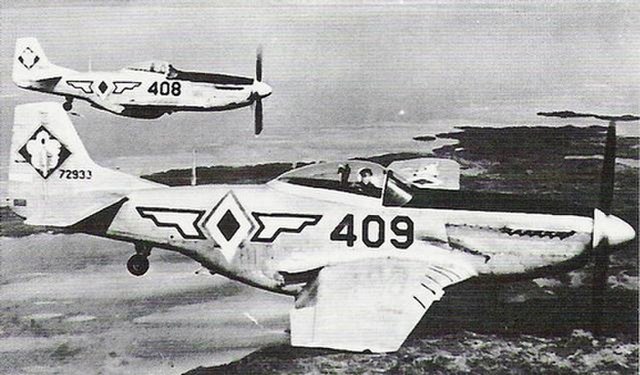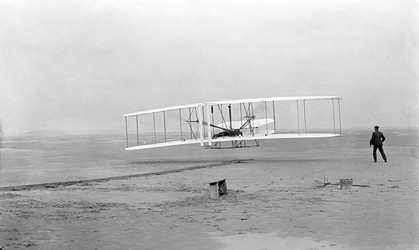Look up in the sky! It’s a bird! It’s a plane! No it’s a car!
Posted by Dale Edward Johnson on Feb 23rd 2022
The magic of flying has always been part of naming cars. Way back in 1905 – just a couple of years after the Wright brothers took off from Kitty Hawk, North Carolina, in their machine called the “Flyer” – motorists could buy a car called a Thomas Flyer.
Charles Lindbergh became the first person to fly solo across the Atlantic in 1927. Lindbergh was soon part of the ad campaign of the Franklin automobile. Franklin was the last major maker of air-cooled automobiles (it folded in 1934) until the Volkswagen came along. Lindbergh was a great believer of air-cooled engines and owned a Franklin. The Franklin model that was introduced to honor Lindbergh was called, appropriately, the “Airman.”
 v
v
The Hudson Essex Terraplane was offered from 1932 to 1938. With quick performance, the company called driving it “land-flying.” When the Terraplane was introduced in July 1932, Orville Wright received the first car, and Amelia Earhart received the second Terraplane car.

After the Second World War airplane names became extremely popular on cars. It was no doubt an attempt to appeal to servicemen who had flown during the war. It was also a way of tying in the technology of aircraft with the automobile that could be sitting in your driveway.
Willys offered the Aero, the Aero-Eagle, the Aero-Lark and the Aero-Wing. Hudson offered a Jet and a Jetliner.
Triumph named its Spitfire (1962 to 1980) after Britain’s most famous World War II fighter plane. The Triumph Spitfire was introduced in 1962, as a small sports car based on the Triumph Herald, and designed to be a notch above the MG Midget and the Austin-Healey Sprite. Triumph played up the history of the aircraft in ads. In one, the car posed in front of the World War II plane and the copy says “Spitfire! Honoring the plane that saved Britain.”
Oldsmobile named several of its models after airplanes. A 1953 Oldsmobile show car was the Starfire concept car, with the same name as a US military jet fighter. The Starfire name was first used on a production Oldsmobile from 1954 to 1957. In 1961 the Starfire name was revived for a premier convertible. In 1975, the Starfire name was revived again on a small Oldsmobile, essentially a version of the Chevrolet Monza.

An executive jet, the Lockheed Jetstar, was introduced in 1957. The Jetstar name was first used by Oldsmobile in 1964 for the entry-level model in the mid-range 88 series. To add to the confusion there is also a new Jetstar I, which was a low-priced companion to the full-size Starfire.

An Oldsmobile show car for 1954 was called the Cutlass, named after a military aircraft, and it later became the name of a top-selling Oldsmobile in the 1970s.
The Ford Mustang, which kicked off the “pony car” era, used a galloping horse as its logo. However, as Lee Iacocca says in the book Iacocca: An Autobiography: “It was not named for the horse but for the legendary World War II fighter plane.”

The name Caravelle, used on a French-made airplane, was borrowed by Renault in the 1960s for its sporty, Italian-designed coupe. Plymouth brought back the Caravelle name for its version of the Dodge Diplomat in 1977. Plymouth later use the Caravelle name on a small K-car from the mid-1980s to the mid-’90s.
American Motors used the initials SST for its top-line models in the late 1960s, just as the Super Sonic Transport plane – the Concorde – was being developed. Interestingly, American Motors later used the name Concord (without an “e” at the end) on what was essentially a dressed up Hornet. The Concorde name (with an “e” at the end) was revived in the 1990s for the cab-forward Chrysler.
Saab got its start is an aircraft manufacturer, and then, after World War II, began making cars, and the aeronautical roots were played up in ads. Saab production ended in 2016.
BMW also has airplane roots. The BMW logo represents a spinning airplane propeller, and the blue and white colors pay tribute to the Bavarian flag. During World War I, BMW was a supplier of engines for airplanes to a company run by Gustav Otto, the son of Nicholas Otto, who invented the four-cycle, internal-combustion engine.

In many cases it’s just a coincidence that cars share names with airplanes. Even if there were no deliberate attempt, it says something that so many names were shared by the two forms of transportation. Apparently, automobile and airplane manufacturers believe these names convey positive images to potential buyers. Among the names that were used on vehicles and airplanes: Aerostar, Ambassador, Apollo, Aurora, Avanti, Barracuda, Bearcat, Bronco, Caravan, Catalina, Challenger, Charger, Citation, Cobra, Comanche, Commando, Courier, Crusader, Dart, Diplomat, Eagle, Envoy, Falcon, Firefly, Fox, Fury, Hawk, Hornet, Hudson, Imp, Jaguar, Javelin, Lancer, Lincoln, Lynx, Malibu, Marathon, Marlin, Mercury, Meteor, Nomad, Omega, Phoenix, Reliant, Skyhawk, Swift, Tempest, Thunderbird, Tiger, Valiant, Vega, Voyager, Wasp and Wildcat.
Although airplanes have been one of the greatest sources of car names, there have been some popular aircraft that will not likely ever have their names borrowed by the auto industry – such as the Buffalo, Caribou, Chipmunk, Guppy, Loon, Mallard, Mosquito, and Swordfish.
Finding automotive restoration supplies is easy at Collectors Auto Supply, which has a full range of vintage auto parts. No matter what kind of collector car parts you are looking for, contact Collectors Autos Supply for all of your vintage car restoration parts.


